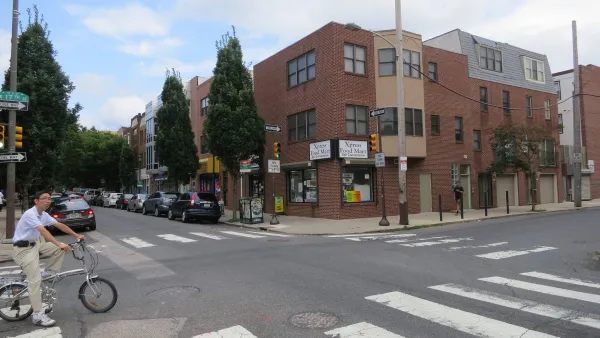A new study by researchers at the Urban Institute finds new evidence that upzoning produces housing supply and reduces costs, while downzoning does the opposite.

A study published recently in the journal Urban Studies has produced “the first cross-city panel dataset of land-use reforms” to quantify the impact on housing supply and rents.
The study is behind a paywall at the journal, but from the study’s abstract, we can see that the study used machine-learning algorithms to search U.S. newspaper articles between 2000 and 2019, merging the data with U.S. Postal Service and Census data.
“We find that reforms that loosen restrictions are associated with a statistically significant 0.8% increase in housing supply within three to nine years of reform passage, accounting for new and existing stock,” according to the abstract.
The Urban Institute also wrote up the study for an article on their own website, providing further insight into the study’s methodology and findings. For example, the resulting increase in housing supply is greater at the higher end of the market, and the research finds “no statistically significant evidence that additional lower-cost units became available or became less expensive in the years following reforms.”
Still, the benefits still manage to spread to other parts of the market, according to the study: “impacts are positive across the affordability spectrum and we cannot rule out that impacts are equivalent across different income segments.”
The study also found the converse to be true: “reforms that increase land-use restrictions and lower allowed densities are associated with increased median rents and a reduction in units affordable to middle-income renters.”
The new research is the latest in an ongoing debate, central to the political debate happening between pro-development political forces (i.e., YIMBYs) and those opposing developments, including both anti-displacement and neighborhood character protection groups.
FULL STORY: Land-Use Reforms and Housing Costs

National Parks Layoffs Will Cause Communities to Lose Billions
Thousands of essential park workers were laid off this week, just before the busy spring break season.

Retro-silient?: America’s First “Eco-burb,” The Woodlands Turns 50
A master-planned community north of Houston offers lessons on green infrastructure and resilient design, but falls short of its founder’s lofty affordability and walkability goals.

Delivering for America Plan Will Downgrade Mail Service in at Least 49.5 Percent of Zip Codes
Republican and Democrat lawmakers criticize the plan for its disproportionate negative impact on rural communities.

Test News Post 1
This is a summary

Test News Headline 46
Test for the image on the front page.

Balancing Bombs and Butterflies: How the National Guard Protects a Rare Species
The National Guard at Fort Indiantown Gap uses GIS technology and land management strategies to balance military training with conservation efforts, ensuring the survival of the rare eastern regal fritillary butterfly.
Urban Design for Planners 1: Software Tools
This six-course series explores essential urban design concepts using open source software and equips planners with the tools they need to participate fully in the urban design process.
Planning for Universal Design
Learn the tools for implementing Universal Design in planning regulations.
EMC Planning Group, Inc.
Planetizen
Planetizen
Mpact (formerly Rail~Volution)
Great Falls Development Authority, Inc.
HUDs Office of Policy Development and Research
NYU Wagner Graduate School of Public Service





























